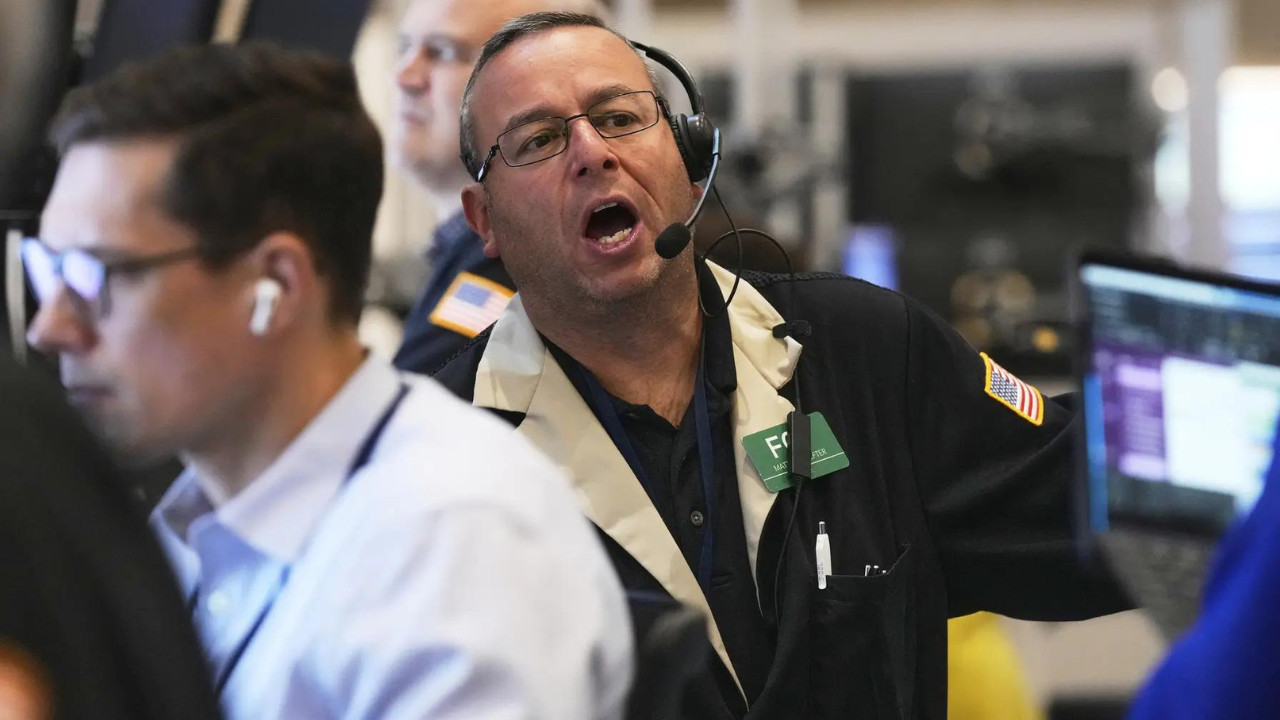Wall Street stocks declined early Tuesday as renewed trade tensions between the US and China pressured major indices. The S&P 500, Dow Jones, and Nasdaq all saw losses, reflecting investor sentiment shifts. China’s ban on dealings with South Korean shipbuilder subsidiaries, seen as a counter to US shipbuilding efforts, contributed to the downturn.
Navigating Choppy Waters: How China Trade Jitters Impact the Stock Market
The stock market, that ever-sensitive barometer of global sentiment, just experienced a little turbulence. Recent trading sessions saw key indices like the S&P 500 and the Dow Jones Industrial Average taking a slight dip, a wobble largely attributed to renewed anxiety surrounding US-China trade relations. It’s a reminder that even with a generally positive economic outlook, geopolitical undercurrents can quickly stir the pot.
But it’s never just one thing, is it? Dig a little deeper, and you’ll find a confluence of factors contributing to this market mood.
Tech and Banking Under the Microscope
While trade tensions grab headlines, specific sectors are also facing increased scrutiny. The tech world, a perennial market driver, is currently navigating a complex landscape of regulatory pressures and shifting consumer demand. Some Big Tech names experienced a bit of a pullback, reflecting investor caution in the face of these challenges.
Meanwhile, the banking sector continues to be under the microscope. Lingering concerns about interest rates and the potential for further regional bank instability are keeping investors on edge. While major institutions have largely weathered recent storms, the memory of earlier disruptions hasn’t completely faded, leading to a more cautious approach to bank stocks.
China Trade Tensions: The Old Worry Returns
The elephant in the room, of course, remains the US-China trade relationship. After a period of relative calm, simmering tensions have resurfaced. Recent statements and policy shifts from both sides have injected a dose of uncertainty into the market, reminding everyone that a full resolution is still a distant prospect.

The fear? A potential escalation of trade barriers could negatively impact corporate earnings, disrupt supply chains, and ultimately slow down global economic growth. This is why even a hint of renewed tension sends shivers down the spines of investors. Remember the trade wars of the past? Nobody wants a repeat performance.
Interest Rates: Still Calling the Tune
The Federal Reserve’s monetary policy continues to play a crucial role in shaping market dynamics. While inflation has shown signs of cooling, it remains above the Fed’s target, leading to speculation about future interest rate hikes. The possibility of further rate increases is acting as a drag on market sentiment, particularly for interest-rate-sensitive sectors like real estate and utilities. Investors are carefully parsing every economic data point and Fed announcement, trying to anticipate the next move. Understanding the role of China trade in all of this is vital.
Beyond the Headlines: The Bigger Picture
It’s important to maintain perspective amidst the daily market fluctuations. While short-term volatility is unavoidable, the overall economic picture remains relatively stable. The labor market is still strong, consumer spending is holding up, and corporate earnings, while mixed, are generally decent.
This suggests that the recent market dip is more of a correction than a sign of a major downturn. It’s a healthy reminder that markets don’t move in a straight line and that occasional pullbacks are a normal part of the investment cycle.
If you are interested in long term market strategies, consider reading our post about long term investment strategies.
What Does This Mean for Investors?
So, what should investors do in the face of this market uncertainty? The standard advice still applies: stay calm, diversify your portfolio, and focus on your long-term financial goals. Trying to time the market is a fool’s errand. Instead, use periods of volatility to rebalance your portfolio and potentially buy into high-quality companies at discounted prices.
The current market environment requires a discerning eye and a steady hand. While anxieties surrounding China trade and broader economic concerns are valid, knee-jerk reactions rarely lead to positive outcomes. Prudent investors should focus on fundamentals, maintain a diversified approach, and remember that patience is a virtue in the world of finance.
Ultimately, the market’s near-term trajectory remains uncertain. The interplay of US-China trade relations, interest rate policies, and sector-specific challenges will continue to shape investor sentiment. However, by staying informed, remaining disciplined, and focusing on the long term, investors can navigate these choppy waters and position themselves for future success.






